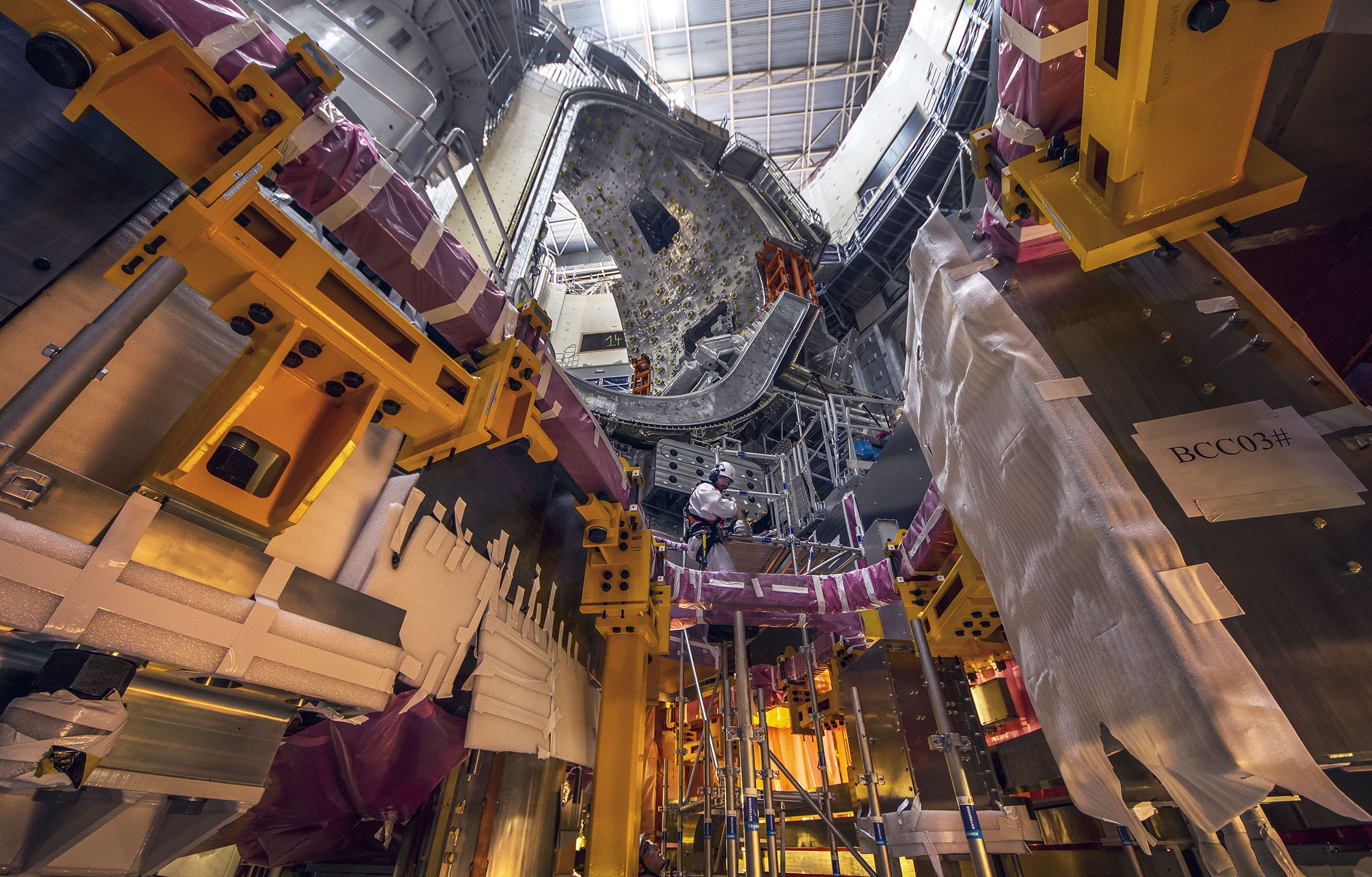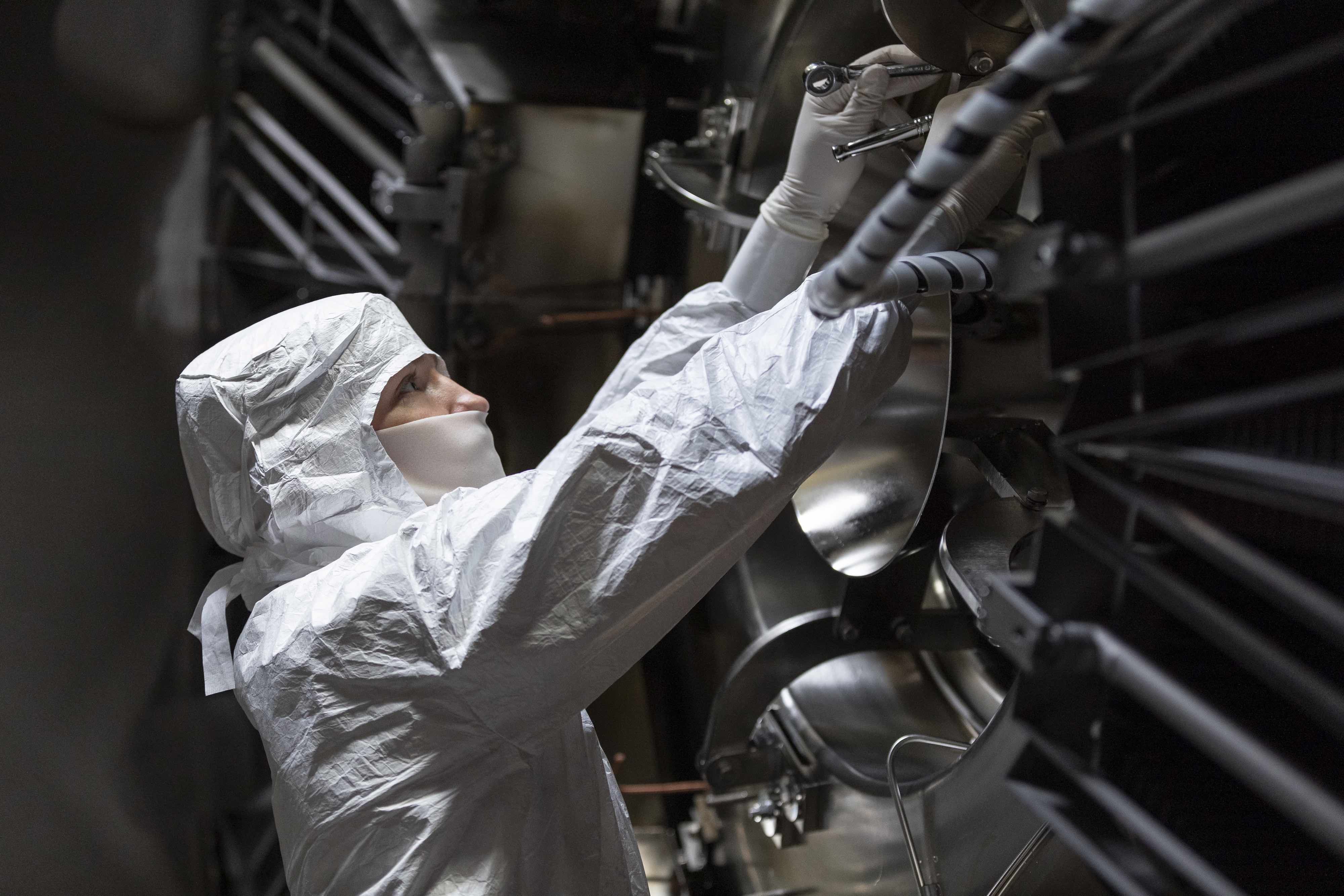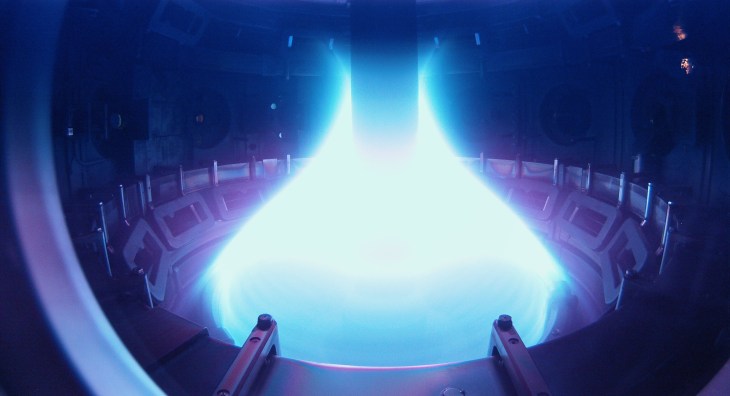For decades, the answer to when fusion power would arrive was like the punchline to an oft-repeated joke — it was always 10 or 20 years away. Now, it might actually be on the cusp of commercialization.
No, really.
If that refrain sounds all too familiar, it’s because, well, something like that was written 10 years ago. Fusion research has been simmering for decades. But now, it’s reaching a boiling point, and there’s plenty of evidence to suggest that this time will be different.
For a field that has existed for more than 60 years, a lot has happened in fusion research in the last half-decade. Researchers have set new records for how long they can contain the superheated plasma that fusion requires. Magnets to contain those plasmas have grown stronger and more efficient. As a result, the power produced by each fusion experiment has ramped up steadily, creeping closer to the point where the reactors produce more power than they consume, known as the break-even point.
“The reason to be excited about fusion now is the same reason to be excited about computers in the 1940s when someone invented the transistor.” Breakthrough Energy Ventures partner Phil Larochelle
It’s as though fusion research were a race, but the different groups competing weren’t sure where they were on the course. Then, suddenly, they all spotted the finish line: reactors creating as much power as they gobble up.
Buoyed by those results, investors are betting large amounts of money that fusion will soon banish the ghosts of its past: Fusion startups raised $2.7 billion in the last year alone, according to a TechCrunch analysis of PitchBook data.
Such a sudden burst of progress across a number of different approaches might seem implausible at first glance. At the very least, it cuts against the popular narrative of the lone genius making a key discovery that cracks the problem once and for all. But it suggests that fusion power’s time has arrived.
“Are we at an inflection point in fusion?” said Eric Toone, technical lead of the investment committee at Breakthrough Energy Ventures. “We absolutely believe so.”
Breakthrough is one of a handful of investors that have placed sizable bets on fusion power becoming a reality. Started by Bill Gates, Breakthrough joined a $1.8 billion Series B for Commonwealth Fusion Systems last year, its third investment in the startup. (Gates personally joined that round, too.) Chevron and Google in July led a $250 million Series G for TAE Technologies, which has been around since 1998. Helion Energy raised $500 million last year, led by Sam Altman. Zap Energy closed a $160 million round earlier this year.
That’s a lot of money riding on a yet-unproven technology. Fusion power isn’t preordained, of course — humanity isn’t fated to control the power of the sun. But the recent momentum created by three technological advances suggests we’re closer than ever. And that frenzy can be explained by a concept drawn from a very different field of study: evolutionary biology.
The quest for fusion power has been a slog, to put it mildly. The first theories concerning nuclear fusion were developed over 100 years ago, and serious applied research into fusion reactors started in the Soviet Union in the mid-1950s. Progress was slow, though, while fusion’s cousin, fission, moved comparably quickly from lab curiosity to doomsday weapon to utility-grade source of electricity.
Research suggested some of fusion’s hurdles could be overcome by making bigger tokamaks, the doughnut-shaped containers in which magnetic fields contain the superheated plasma. Larger tokamaks make it easier to obtain higher power outputs with weaker magnetic fields. That understanding helped kick off a trend of larger and more expensive experiments.
The Joint European Torus, which broke ground in 1982, was among the first large-scale fusion experiments, and the trend arguably peaked with the International Thermonuclear Experimental Reactor, better known as ITER.
ITER is the offspring of efforts to achieve a detente in the Cold War in the 1980s; Reagan and Gorbachev settled on the idea as a way for the two superpowers to cooperate. Since then, ITER has expanded to include six countries and the EU, each contributing a piece to the project.
ITER’s initial designs took over 15 years to nail down, and it was another four years before the member nations decided where to build it. The consortium broke ground in the south of France in 2007, and when I visited the site in 2019, the massive construction site was beginning to resemble the renderings of its plans.

Technicians install parts that will help confine plasma inside ITER’s massive tokamak. Image Credits: ITER
But as I watched engineers wrap miles upon miles of niobium-based wire to create its massive magnets, and when I peered into the depths of the massive unfinished tokamak, it was clear that it had a long way to go. Today, ITER is still another decade or so from “first plasma,” an industry term for when a fusion reactor first starts up.
Plenty of observers have gazed upon ITER and concluded that the project is a folly. It might hit its milestones, but at what cost and after how many years? It’s already cost at least $22 billion and progress has stalled so many times that people questioned whether the zero-emission power source could make a dent in climate change before it was too late.
But fusion research wasn’t waiting for ITER to fire up. Scientists have made steady progress in the 30 years since ITER was conceived, learning how to build the complex systems needed to bring 100-million-degree plasma to heel and gathering data on numerous different types of reactors.
Another approach to fusion has shown promise: Inertial confinement, which uses lasers to zap a tiny fuel pellet, has arguably come the closest to breakeven, but it, too, has a ways to go.
“Fusion isn’t hard. What’s hard is energy-positive fusion,” Breakthrough partner Phil Larochelle said.
New confidence
Everyone in the fusion industry admits they’re still at least several years away from hitting breakeven. But the pace of progress, particularly among private companies, has given investors and researchers confidence it’s within reach.
Take Commonwealth Fusion Systems (CFS), for example. The startup announced in 2018 that its Spark reactor would exceed breakeven in 2025. Previously, when companies made proclamations like that, they were taken with a grain of salt. Now, attitudes have changed, in part because companies like Commonwealth have delivered on prior promises, a marked shift from ITER’s continually slipping milestones.
“Commonwealth Fusion Systems has met every single milestone they set out so far, which provides a lot of confidence,” said Saskia Mordijck, an associate professor of physics at the College of William and Mary in Williamsburg, Virginia. “I’m fairly confident that for their construction, as long as they don’t say otherwise, they will be on time.”
A majority of fusion startups like CFS have adopted a tokamak design, but even other companies that use inertial confinement or stellarators have leaped forward. “There are technological advances that have opened new pathways,” Mordijck said.
Evolutionary leaps
Those technological advances drove a wave of changes in fusion research and led to a step-change in how quickly different approaches progressed. Work that had been plodding suddenly picked up the pace. It’s the sort of shift that mirrors a theory in evolutionary biology known as punctuated equilibrium.
Punctuated equilibrium describes how one species might remain relatively stable before undergoing a rapid explosion of changes that lead to a host of new species, known as a speciation event. Those changes can be brought about by a number of drivers, one of which is when a species’ environment changes rapidly. The Chicxulub asteroid that brought about the end of the dinosaurs is a canonical example — small mammals suddenly had the run of the place and began to rapidly evolve.
Daniel Levinthal thinks the theory also applies to the business world. A professor of management at the University of Pennsylvania’s Wharton School, Levinthal did some early work porting over the evolutionary theory, and when asked whether the fusion sector’s rapid advances resembled punctuated equilibrium, he agreed.
“It wasn’t like young Einstein woke up with a new idea in fusion physics. It was more like, really bright, capable fusion people now have a better toolkit of supporting elements,” he said. “I think our lay inclination would be the former — that there was a breakthrough infusion, per se. And I’m sure they’ve gotten more clever, but the real critical binding constraints have been more relaxed around complementary technology.”
In fusion’s case, a trio of technological advances converged in the early 2010s to unleash a wave of innovation.
One was the continued shrinking of the transistor that’s led to ever faster and more energy-efficient semiconductors. Fusion reactors will only work as long as they can contain their plasma, which can lose stability in the blink of an eye. To counter those changes, the reactor has to adjust its settings to modify the plasma’s behavior. “Every fraction of a millisecond starts to count,” said Michl Binderbauer, CEO of TAE Technologies. Earlier semiconductors were too slow, though that’s changed in the last few years.
“I think you see this beautiful inflection point in this field where the science maturity and technical capability come together,” he said.

A technician works inside TAE Technologies’ Norman reactor, which was first brought online in 2017. Image Credits: TAE Technologies
All fusion startups harness this power, but the Wendelstein 7-X experimental reactor in Germany is one of the most prominent examples of how advanced semiconductors have driven fusion research forward. Initially switched on in 2015, the reactor has a stellarator design, which is basically a doughnut shape with added twists and undulations.
Each twist and undulation, though, tweaks the reactor’s performance in different ways and adds complexity to the design process. “Because you have so many options, which one do you pick?” Mordijck said. The W7-X team modeled different permutations before building the machine, the first time a fusion reactor had been tested in silico before it had been built.
Machine learning is another area where advanced semiconductors have benefited fusion research. Over the last few decades, increases in computing power have driven a resurgence in interest — and progress — in machine learning.
When machine learning reached the fusion world, it sped progress in some key areas. After TAE built a new machine, Binderbauer said, the company would experiment with hundreds of settings to figure out how to get the most out of it. The process was slow and time-consuming.
Then, the company started experimenting with machine learning. “What used to take us two months — about 1,000 experiments to find optimum settings — we could now do in maybe three to four weeks,” Binderbauer told TechCrunch. Stunned by the progress, Binderbauer pitched Google on a collaboration, which hit full stride in 2014. Now, he said, “we’ve reduced that optimization problem to tens of experiments, which we can do in fractions of an afternoon.”
The third technological leap was the ability to manufacture high-temperature superconductors (HTS) en masse. In tokamaks and other designs that rely on magnetic fields, superconductors allow scientists to ramp up the power of the magnetic field used to contain the plasma. High-temperature superconductors let them do so with less energy, helping to bring the break-even point within reach.
Some of the first high-temperature superconducting materials were discovered in the 1980s, but they were brittle and hard to work with. ITER’s design, which was set in 2001, proceeded with low-temperature superconductors that have to be cooled to negative 269 degrees Celsius using liquid helium. It wasn’t until the 2010s that companies could reliably produce high-temperature superconducting magnets at lengths that could work for fusion reactors. (Similar techniques are widely used to produce semiconductors and certain kinds of solar panels.)
HTS magnets are much more powerful than their low-temperature kin. “The stronger your magnet, the smaller the machine can be, because the strength of the magnet directly determines how well you will be able to kind of control your plasma,” Mordijck said. Smaller machines are also cheaper and easier to build.
That, in turn, makes it easier for investors to envision the final product. “What is the component-level advance that can build on the science that now makes a commercial reactor at least plausible? I would say it is the high-temperature superconducting magnet,” Larochelle said.
Without the confluence of these three advances — computing speed, machine learning and HTS magnets — fusion would probably not be where it is today. After decades of stagnation, the last five to 10 years have been a period of rapid speciation, characteristic of the theory of punctuated equilibrium. Fusion startups that have been around for years have gotten a second wind, and new ones have popped up to explore previously underexploited niches.
Ten to 15 years is still a ways out, but for some investors, it’s the right time to get involved.
“The reason to be excited about fusion now is the same reason to be excited about computers in the 1940s when someone invented the transistor,” Larochelle said.
